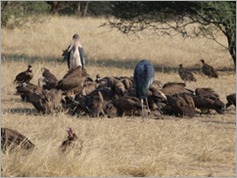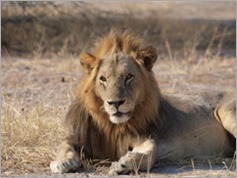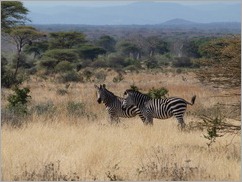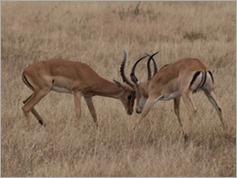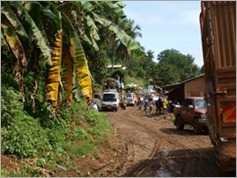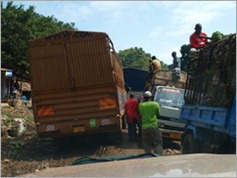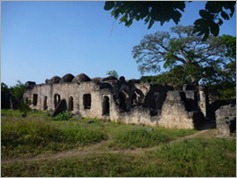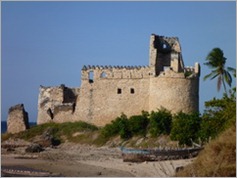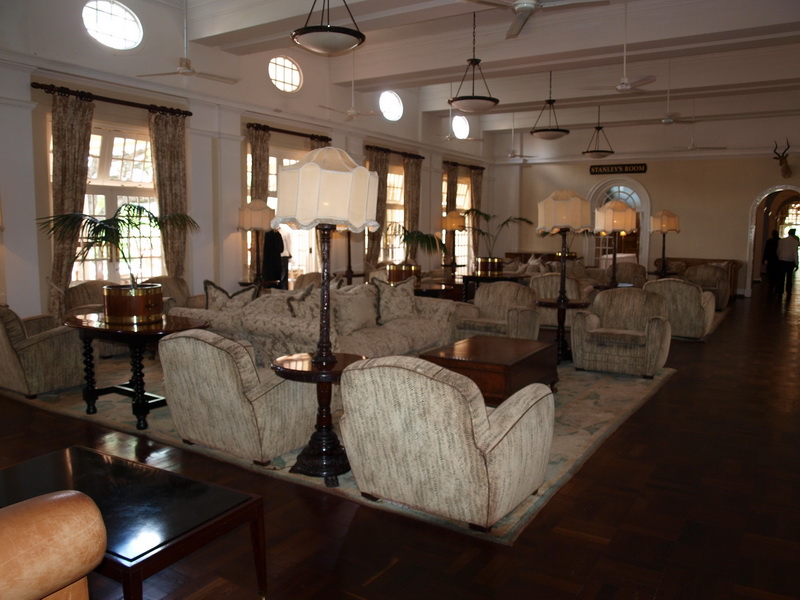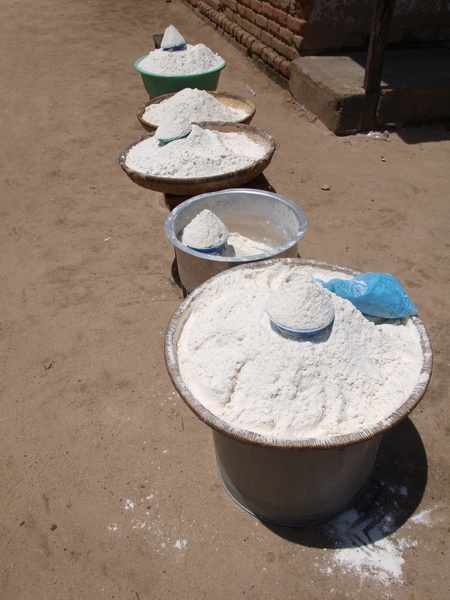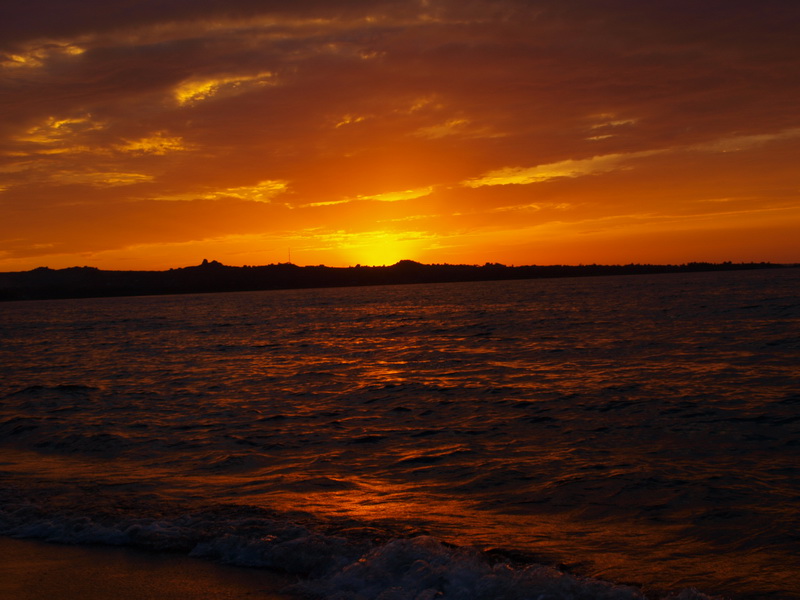After looking around Livingstonia we took the dirt road back down the escarpment to the lake. The 11km took us nearly an hour as the road is made of big stones and gravel, is quite narrow in parts, has lots of hairpin bends in it and is quite steep. The view to the lake is lovely all the way down.
Chitimba Camp was our overnight stop and we were easily there by lunchtime, which was just as well as we needed to do the laundry and catch up on things. Our car was so dirty by now that I am sure it was increasing our fuel consumption with the extra mud and dirt we were carrying, so we asked the owner if he could organise someone to wash the car for us. It would cost us a grand total of 250 Kwatcha ($1.65). The guy must have spent 3 hours washing it, and even then it wasn’t entirely clean, but the dust was gone which was the main thing.
This morning we headed for the Tanzania border. Exiting Malawi was simple and took just a few minutes. Entering Tanzania was also pretty straightforward although took a little longer and cost a lot more! Tanzania required a visa each ($US50), a Foreign Vehicle Permit ($US20), a road levy ($US5), and we decided to finally buy a COMESA ($US120) which is insurance that covers most of our remaining countries and will save us money in the end. The only tricky bit was the COMESA as you don’t actually buy that until you are out of the border post and you need to purchase it in a tiny shack that is amongst plenty of other shacks and chaos, naturally though there is a local to show you his shop.
As soon as we crossed the border to Tanzania you could tell that the country and its people were better off. The houses were still rectangular and made of brick, but very few were made of homemade mud bricks and they were now held together with cement. Most also had tin rooves instead of thatch, with real windows and were larger. The people were dressed better and everyone wore shoes which was unusual in Malawi. The use of land had also changed. Now there were tea and banana plantations everywhere and the land was being used rather than remaining idle. A variety of fruit and vegetables were now being sold by the side of the road, rather than just the bananas and tomatoes of Malawi. There was also more cars and trucks and less people (although still a lot of people) on the road.
We drove through the mountain scenery and headed for Mbeya hoping to be able to find a supermarket as we had no meat or vegetables, nor eggs, cereal or bread for breakfast and very little drinking water, in fact we had pretty much exhausted everything except our emergency tin supplies. I am sure there is a supermarket there but we were unable to find it, so we made the decision to drive on to the Kisolanza Farm about 50km out of Iringa as we knew we could camp there and eat in their restaurant and that the food was good having been there previously. After fuelling up with diesel that was thankfully a reasonable price again and becoming millionaires by withdrawing 1.2 million shillings, we were on our way.
We arrived at Kisolanza Farm about 6pm (we lost an hour in a timezone change at the border, but the sun comes up and goes down now at a reasonable hour!). By 7pm we had setup camp, had a super hot shower that even needed cold water mixed with it (a super luxury these days), and bought a kilo of baby potatoes, a bunch of baby carrots, a huge bag of snow peas and a lettuce for 6000 Tsh ($3.95). Dinner in the restaurant was a delicious three course meal with tea and coffee for $US15 each. We were both starving as all we had managed to eat all day was some bananas for lunch and the meal went down extremely well.
The people on the farm are really helpful. The chef kindly made us a loaf, sort of like a date loaf but without the dates, for our breakfast the next morning. You can not only buy vegetables from the farm, but meat as well, so we stocked up on meat for a ridiculous cheap price, and the meat has been lovely. The owner also told us where to shop in Iringa and tips for our route. All in all an excellent stop over spot.
(Sorry no photos as I’ve been getting a bit complacent with the scenery around us).





